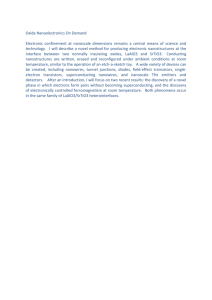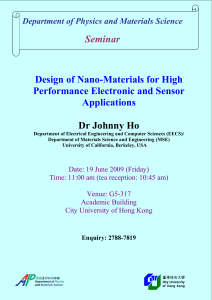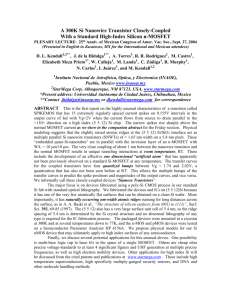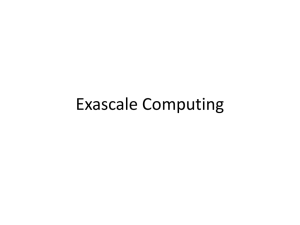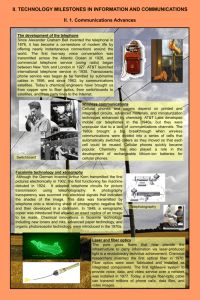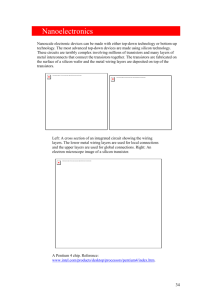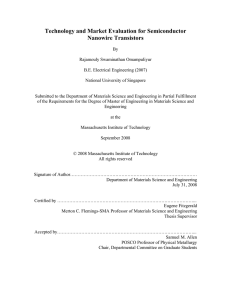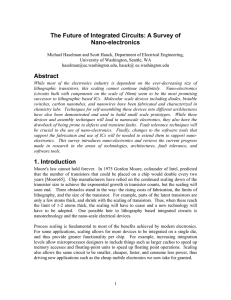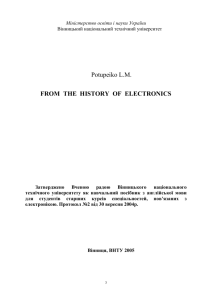nanotubes 11
advertisement
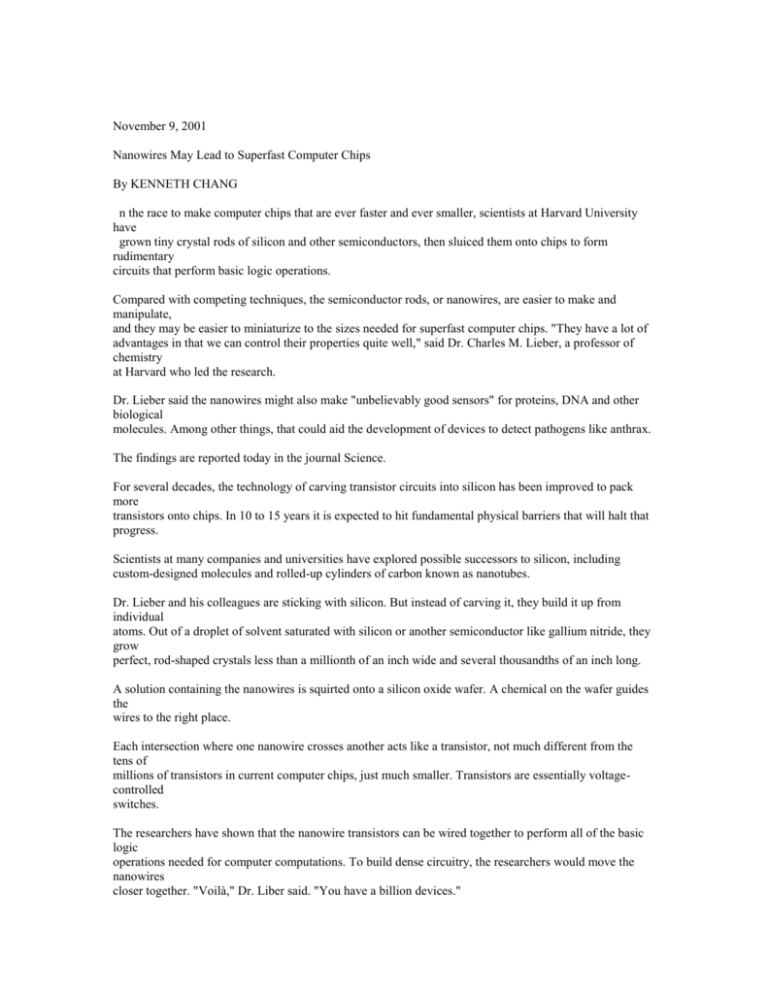
November 9, 2001 Nanowires May Lead to Superfast Computer Chips By KENNETH CHANG n the race to make computer chips that are ever faster and ever smaller, scientists at Harvard University have grown tiny crystal rods of silicon and other semiconductors, then sluiced them onto chips to form rudimentary circuits that perform basic logic operations. Compared with competing techniques, the semiconductor rods, or nanowires, are easier to make and manipulate, and they may be easier to miniaturize to the sizes needed for superfast computer chips. "They have a lot of advantages in that we can control their properties quite well," said Dr. Charles M. Lieber, a professor of chemistry at Harvard who led the research. Dr. Lieber said the nanowires might also make "unbelievably good sensors" for proteins, DNA and other biological molecules. Among other things, that could aid the development of devices to detect pathogens like anthrax. The findings are reported today in the journal Science. For several decades, the technology of carving transistor circuits into silicon has been improved to pack more transistors onto chips. In 10 to 15 years it is expected to hit fundamental physical barriers that will halt that progress. Scientists at many companies and universities have explored possible successors to silicon, including custom-designed molecules and rolled-up cylinders of carbon known as nanotubes. Dr. Lieber and his colleagues are sticking with silicon. But instead of carving it, they build it up from individual atoms. Out of a droplet of solvent saturated with silicon or another semiconductor like gallium nitride, they grow perfect, rod-shaped crystals less than a millionth of an inch wide and several thousandths of an inch long. A solution containing the nanowires is squirted onto a silicon oxide wafer. A chemical on the wafer guides the wires to the right place. Each intersection where one nanowire crosses another acts like a transistor, not much different from the tens of millions of transistors in current computer chips, just much smaller. Transistors are essentially voltagecontrolled switches. The researchers have shown that the nanowire transistors can be wired together to perform all of the basic logic operations needed for computer computations. To build dense circuitry, the researchers would move the nanowires closer together. "Voilà," Dr. Liber said. "You have a billion devices." Practical computer chips using nanowires are probably a decade away. Dr. Lieber said that in a year or two the nanowire transistors could be used as biological sensors by adding sites for specific molecules — say a piece of anthrax — to bind to the nanowires. Because DNA and proteins carry electrical charges, they would switch the transistors on, setting off an alert. Other molecular electronics researchers are reporting important advances in today's Science. Scientists at Lucent Technologies (news/quote)' Bell Labs — who reported last month that they had built a transistor whose active switching layer is one molecule thick but consists of several hundred thousand molecules — now report that they have constructed a transistor where a single molecule acts as the switch. And researchers at the Delft University of Technology in the Netherlands report that they have constructed logic circuits out of nanotubes. In April, researchers at I.B.M.'s Thomas Watson Research Center in Yorktown Heights, N.Y., reported that they had built arrays of transistors out of nanotubes and had made the simplest possible logic circuit. The Dutch researchers, like Dr. Lieber, have built logic circuits to perform each of the fundamental operations. "This is the sort of toolbox that typical electronics people would do," Dr. Cees Dekker, the lead researcher, said. Until the advances this year, molecular electronics researchers have made switches that can turn electric current on and off, but cannot amplify signals as transistors do. To be used for computation, such switches would require a radically different architecture. The new transistors suggest that post-silicon computers may be much like today's, only smaller and faster. "We really have a period of momentous development in molecular- scale electronics," said Dr. James C. Ellenbogen, a pioneer in molecular electronics. Advances that had seemed impossible a short while ago "suddenly are made to look almost obvious," Dr. Ellenbogen said. Home | Back to Technology | Search | Help Back to Top Click Here to Receive 50% Off Home Delivery of The New York Times Newspaper. Copyright 2001 The New York Times Company | Privacy Information

